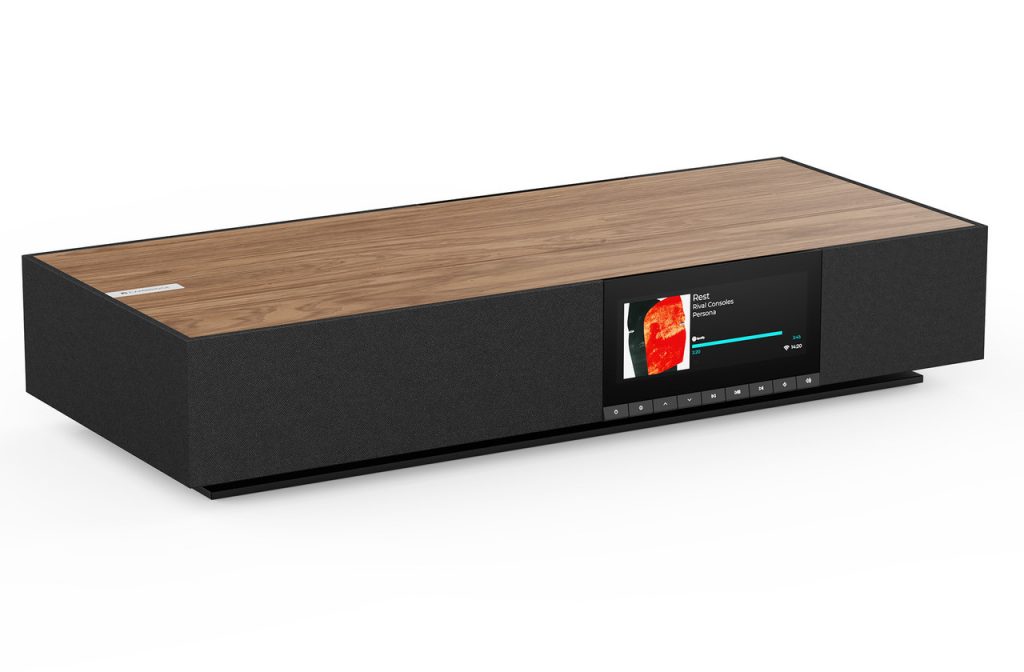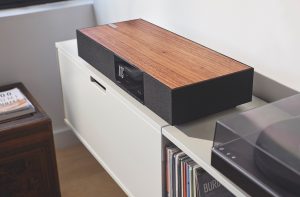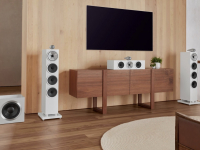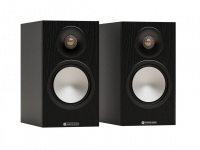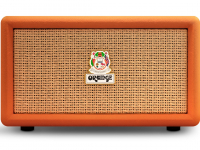It’s a tricky balance to strike, trying to find something that can produce genuine hifi sound against sets of boxes that can dominate the living room by the time you’ve got everything together. Cambridge Audio’s latest edition to their Evo range however, might be the unicorn everyone with less space to play with needs – but can ONE box really sound that good?
The aptly named Cambridge Audio Evo ONE is just that – one box. In the same vein as other streaming systems such as the longstanding Naim Muso (also a big favourite for colleagues and customers), Cambridge have produced a streaming focused system with all speakers built-in, as well as a host of connectivity if you do need to add on some other sources. To call this simply a ‘premium wireless speaker’ however, is to do it a disservice.
Unboxing the Evo One, the team were immediately happy to see the same quality of walnut trim as we’ve seen on the existing Evo 75 and 150 series – Cambridges super-integrated systems that are running on the same excellent streaming app. Designed by the award-winning Ged Martin, the system manages to look both modern, with its stylish grilles and plinth on the underside, to classic with the walnut top plate. This reviewer reckons it would be easy to place this in any room and either tuck it away as a speaker to fill the room discreetly, or give it pride of place and show it off as ‘wireless hi-fi’. After leaving the One to run in for a day before giving it a proper listen, we sat down, stood up and wandered around the room to see how it performed.
The first thing that strikes you is the reach of the soundstage. Whilst wandering about the space as I mentioned, the Cambridge managed to stay defined and engaging despite me being well outside of the ‘ideal listening area’. I opted for a challenging track right off the bat, and chose Noordpool Orkest’s cover of Radiohead’s Weird Fishes. The jazz symphony was intelligible in an impressively wide arc across the room, only starting to noticeably lose definition as you approach the more extreme angle from the system – something the Ruark R3S struggled with when compared in the same setting.
This is arguably down to the staggering amount of speakers Cambridge have managed to fit to the unit – 14 to be precise. But far from these being crammed in haphazardly, the control it offers the unit means that the One can easily fill a room, but keep the sound enjoyable and detailed wherever you are in the space.
Keen to make sure that the 700w amplifier behind the scenes is up to task, I pitted the One against the Naim – which quotes 450w in power. I’ll be the first person to go into the details about wattage vs amp class vs resistance so on, all making a difference more than the raw number, but it was still interesting to test.
Throwing the brutal Meshuggah track, Demiurge at the One should have been enough to have it struggling at higher volumes – but it manages to hold it together with minimal distortion. The thunderous track still has enough complexity in it to warrant hearing the details hidden away in it, and the One manages to not lose the rhythmic drumming under the crashing cymbals, and even manages to keep the multiple guitars separated so it doesn’t just become a grinding mess of strings. The Naim, for what it’s worth, did manage to impress with a little extra bass extension over the Cambridge, but didn’t seem to retain the same level of detail – point for Cambridge Audio!
All of the above was of course done through the wonderfully simple and convenient StreamMagic system from Cambridge. Although not strictly a multi-room system, it’s not touting itself as such, but it has every service you could reasonably want, and integrates seamlessly with Google, Apple and Roon for the real audiophiles out there. Head and shoulders above its competitors is also the sheer volume of connections you have at your disposal. Whilst others such as the Naim Muso and Ruark R3S offer a phono stage OR an HDMI, maybe a token aux or optical – the Cambridge has it all. Got a turntable to plug in? There’s an MM phono stage. Need more analogue inputs and there’s an aux. Digital is covered by an optical, HDMI (with eARC) and a USB as well.
If this impressive single box sounds up your street – either for a new system, condensing from a bulky separates, or you just fancy treating yourself, speak to your local Richer Sounds store who will be happy to get this in the experience room for you to hear.
Author: Tom, Cardiff Store



